
The Pond and Marsh
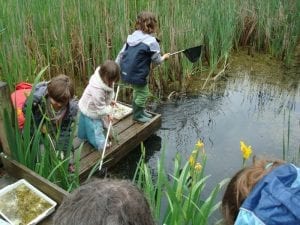 On the St Gregory’s school side of the Reserve lies a 15 metre pond complete with a fully accessible pond-dipping platform. Here, all manner of aquatic wildlife – including frogs, dragonflies, damselflies, diving beetles, pond skaters, water stick insects, and newts – can be viewed at close quarters.
On the St Gregory’s school side of the Reserve lies a 15 metre pond complete with a fully accessible pond-dipping platform. Here, all manner of aquatic wildlife – including frogs, dragonflies, damselflies, diving beetles, pond skaters, water stick insects, and newts – can be viewed at close quarters.
________________________________________________________
 Butterfly Habitat Mounds
Butterfly Habitat Mounds
Surrounding the pond, two long, low mounds provide shelter and a variety of plants to attract nectar-loving insects such as bees, bumble bees and butterflies.
At a time when butterflies are suffering from loss of habitat, the Reserve provides a valuable home to the brown hairstreak butterfly, one of our rarest and most protected species.
________________________________________________________
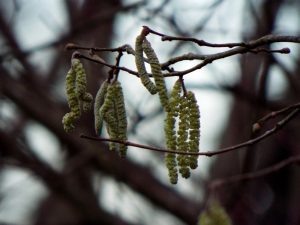 The Hazel Copse
The Hazel Copse
Around twenty mature hazel trees are coppiced, with cuttings used for pea and bean sticks and to provide support for climbing ornamentals in the kitchen garden. The Hazel Copse contains red campion, wild primrose, and violets, and more wild flowers are planned.
________________________________________________________
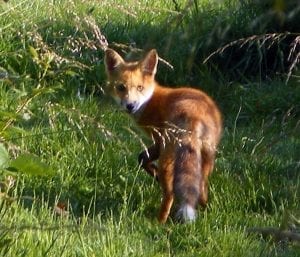 Animal Habitats
Animal Habitats
Scattered around the Reserve are extra habitats to encourage animals to make the Reserve their home. These include a hedgehog house, solitary-bee houses, a ladybird/lacewing box, many bird boxes including a sparrow terrace, a bat box and log piles for hibernating animals and fungal growth.
The Reserve has been designed to support many endangered species, with a slow worm ‘highway’ to provide essential corridors for our protected slow-worm population. If you are lucky, you may spot our family of foxes who have set up home in the Wildlife garden, or a badger emerging from the sett by the path to the allotments.
________________________________________________________
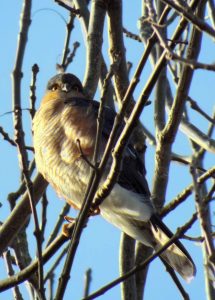 The Bird Orchard
The Bird Orchard
In the Bird Orchard, fourteen varieties of native trees and shrubs provide fruit for numerous bird visitors. Spindle, rowan and yew thrive, while honeysuckle and bryony, along with herbaceous plants such as woody nightshade and wild strawberry provide rich pickings for birds for at least six months of the year.
Sparrowhawks, tawny owls, and red kite are among the birds of prey that frequent Boundary Brook looking for prey. Green and spotted woodpeckers can be heard drumming on the more mature trees, exotic ring-necked parakeets visit, rare redpoll and siskin have been recorded, and if you keep a very sharp eye out, you may spot the UK’s smallest bird: the goldcrest!
Help us record the birds of Boundary Brook
________________________________________________________
The Demonstration Wildlife Garden
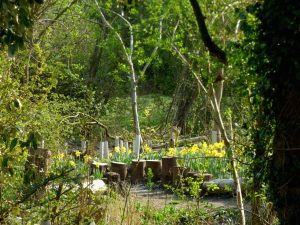
OUWG believes that any ordinary back garden can be made attractive to wildlife, and the demonstration wildlife garden has been designed to prove just that. The shrubs and flowering plants here are a mixture of wild and cultivated species chosen for their value to wildlife.
The demonstration garden provides nectar or pollen, seeds or berries, as well as a pond that is home for our Rare Wetland Plants conservation project.
________________________________________________________
Boundary Brook Scree Garden

Our little alpine scree garden was built 3 years ago over winter in a poorly drained area of the Wildlife Garden previously prone to
flooding. This habitat has blossomed and developed throughout the seasons and members are always asking asking how we made it. The scree garden of course takes inspiration from the alpine landscape and tries to emulate nature. Screes occur in mountainous areas where rock faces disintegrate due to freeze-thaw action. Rock particles and loose stones travel down the slope and reduce the angle of steepness. Streams bring stones of varying sizes. Melting snow in the summer provides water, and in winter a blanket of snow protects plants from frost and desiccating winds. The perfect scree garden offer plants adequate moisture in summer along with good drainage and protection from damp in winter.
For your scree garden, the most important thing is finding an open, sunny position, alpines resent being shaded at any stage, choose a sunny site, well lit in winter, and away from trees and leaf fall.
Once a position is decided upon you have to improve the drainage as most alpine plants hate winter wet. Try to slope your scree downhill towards the sun, because a slope will improve drainage greatly.
Dig out at least 30 cm, more at the lower end, and lay a base of rubble or coarse rock. Then add a layer of soil (about 5 cm deep) before adding a layer of limestone gravel (about 5 cm deep). Then add a mixture of 3 to 4 parts soil, one part shredded leaf mould and one part coarse gravel. Finally cover in a thin layer of gravel and some bigger stones and rocks in places to add variety to your scree.
You can grow a wider range of plants on a scree you couldn’t grow in a garden border. Most will be short in stature (most alpines are) and most will flower in spring (as alpines do). You can extend your season by adding wonderful spring and autumn flowering bulbs see RHS website here, and you can use diminutive shrubby plants for all-year round presence. Pruning or division is best done after flowering.
Alpines are easily sourced from garden centres and include dianthus, thymes, saxifrage, pulsatilla, sedums and campanulas. Miniature daphnes make good additions too. Boundary Brook have had good success wtih sedums, saxifages, rock rose, semper vivum, mouse ear hawk weed, purple toadflax and many others.
Rocks and stones offer cover for many species. A range of patterns with rocks, stones and scree encourages biodiversity.
Insects and invertebrates using a rock pile in partial shade will be very different from those using one that receives more direct sun.
Use a range of sizes of rocks, and dont disturb the pile once built. Birds, insect predators and small mammals will hunt for prey there.
Make the most of your garden
•Dig a shallow depression and place some bigger stones over it – this will attract large creatures seeking shelter, such as toads.
•Song thrushes use large stones as anvils to crack open snail shells.
If you would like to join our team maintaining the scree garden, or other flower beds, in the Wildlife Garden please come and join in, visit our regular work parties. We’re on site every Thursday, 10.30-1.30pm and some weekends. Come and help give whatever time you have – even a half hour at lunchtime helps!
Please just let us know if you are planning to come, so we can accommodate numbers, by emailing: info@ouwg.org.uk
________________________________________________________
Take a guided tour of Boundary Brook Nature Reserve